With the introduction of the '2+2' DB2/4 in October 1953, Aston Martin extended the DB2's appeal to the hitherto untapped yet increasingly important market comprised of 'sports car enthusiasts with a family.' By modifying the rear of the chassis and reducing fuel tank capacity from 19 to 17 gallons, sufficient space was found within the existing DB2 design for two child-sized occasional rear seats. Alternatively, the rear seat backs could be folded down, thus creating a load-carrying platform that more than doubled the luggage space. 'This transformation gives the Aston Martin DB2/4 an unrivalled luggage-carrying capacity in a car which should be capable in favourable circumstances of achieving two miles a minute,' reported The Motor. 'The DB2/4 can truthfully claim to be the fastest car in the world capable of carrying two people with a month's luggage.' Otherwise, the DB2/4 remained much the same as the DB2, employing the latter's rectangular-tube chassis, trailing arm independent front suspension and well-located live rear axle. The 2.6-litre six-cylinder twin-cam power unit - designed under W O Bentley's auspices while the great man was at Lagonda - came in tuned (125bhp) Vantage specification as standard for the 2/4. Despite the Vantage engine, the DB2/4's inevitable weight gain was not fully compensated for until the arrival of the 3.0-litre 140bhp engine in 1954. DB2/4 production had amounted to 565 cars by the time of the MkII's introduction in October 1955. Two years after the introduction of the DB2/4 MkII came the DB MkIII - the '2/4' suffix being dropped - 551 of which, mainly saloons, were made between March 1957 and July 1959. Externally the most obvious change was the adoption of a DB3S-style grille, establishing the 'hallmark' look of subsequent Aston Martins, which had been drawn up by Tickford designer, Bert Thickpenny. This restyled nose give the car a more imposing look while the interior boasted a redesigned dashboard with instruments grouped in a cowled panel ahead of the driver. The engine benefited from an extensive redesign by Tadek Marek (newly arrived from Austin) and featured, among other improvements, a stiffer block, stronger crankshaft and a new cylinder head with bigger valves. 162bhp was available with the single-pipe exhaust system, 178bhp with the optional twin-pipe version. Elsewhere there were improvements to both clutch and gearbox; Laycock overdrive became available and front disc brakes were standard rather than optional after the first 100 cars had been built, commencing at chassis '1401'. Despite the inevitable weight increase, the MkIII was faster than any of its predecessors with a top speed of 120mph. Left-hand drive chassis number '1560' is finished in grey metallic with blue leather interior. Partially restored, the Aston benefits from a major engine service and is described by the vendor as in generally very good condition, with excellent chassis and body and a nicely patinated interior. The car is offered with sundry service invoices, Swiss Carte Grise and Contrôle Technique. Cette élégante DB Mk III à conduite à gauche châssis n° 1560 est de couleur gris métallisé avec intérieur en cuir bleu. En partie restaurée, elle a bénéficié d'une importante révision du moteur et le vendeur la décrit comme étant en très bon état général tant au niveau du châssis que de la carrosserie, l'intérieur affichant une belle patine. Elle est accompagnée de nombreuses factures d'entretien, de la carte grise suisse et de son contrôle technique.
With the introduction of the '2+2' DB2/4 in October 1953, Aston Martin extended the DB2's appeal to the hitherto untapped yet increasingly important market comprised of 'sports car enthusiasts with a family.' By modifying the rear of the chassis and reducing fuel tank capacity from 19 to 17 gallons, sufficient space was found within the existing DB2 design for two child-sized occasional rear seats. Alternatively, the rear seat backs could be folded down, thus creating a load-carrying platform that more than doubled the luggage space. 'This transformation gives the Aston Martin DB2/4 an unrivalled luggage-carrying capacity in a car which should be capable in favourable circumstances of achieving two miles a minute,' reported The Motor. 'The DB2/4 can truthfully claim to be the fastest car in the world capable of carrying two people with a month's luggage.' Otherwise, the DB2/4 remained much the same as the DB2, employing the latter's rectangular-tube chassis, trailing arm independent front suspension and well-located live rear axle. The 2.6-litre six-cylinder twin-cam power unit - designed under W O Bentley's auspices while the great man was at Lagonda - came in tuned (125bhp) Vantage specification as standard for the 2/4. Despite the Vantage engine, the DB2/4's inevitable weight gain was not fully compensated for until the arrival of the 3.0-litre 140bhp engine in 1954. DB2/4 production had amounted to 565 cars by the time of the MkII's introduction in October 1955. Two years after the introduction of the DB2/4 MkII came the DB MkIII - the '2/4' suffix being dropped - 551 of which, mainly saloons, were made between March 1957 and July 1959. Externally the most obvious change was the adoption of a DB3S-style grille, establishing the 'hallmark' look of subsequent Aston Martins, which had been drawn up by Tickford designer, Bert Thickpenny. This restyled nose give the car a more imposing look while the interior boasted a redesigned dashboard with instruments grouped in a cowled panel ahead of the driver. The engine benefited from an extensive redesign by Tadek Marek (newly arrived from Austin) and featured, among other improvements, a stiffer block, stronger crankshaft and a new cylinder head with bigger valves. 162bhp was available with the single-pipe exhaust system, 178bhp with the optional twin-pipe version. Elsewhere there were improvements to both clutch and gearbox; Laycock overdrive became available and front disc brakes were standard rather than optional after the first 100 cars had been built, commencing at chassis '1401'. Despite the inevitable weight increase, the MkIII was faster than any of its predecessors with a top speed of 120mph. Left-hand drive chassis number '1560' is finished in grey metallic with blue leather interior. Partially restored, the Aston benefits from a major engine service and is described by the vendor as in generally very good condition, with excellent chassis and body and a nicely patinated interior. The car is offered with sundry service invoices, Swiss Carte Grise and Contrôle Technique. Cette élégante DB Mk III à conduite à gauche châssis n° 1560 est de couleur gris métallisé avec intérieur en cuir bleu. En partie restaurée, elle a bénéficié d'une importante révision du moteur et le vendeur la décrit comme étant en très bon état général tant au niveau du châssis que de la carrosserie, l'intérieur affichant une belle patine. Elle est accompagnée de nombreuses factures d'entretien, de la carte grise suisse et de son contrôle technique.





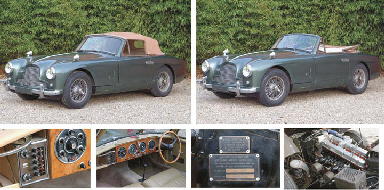
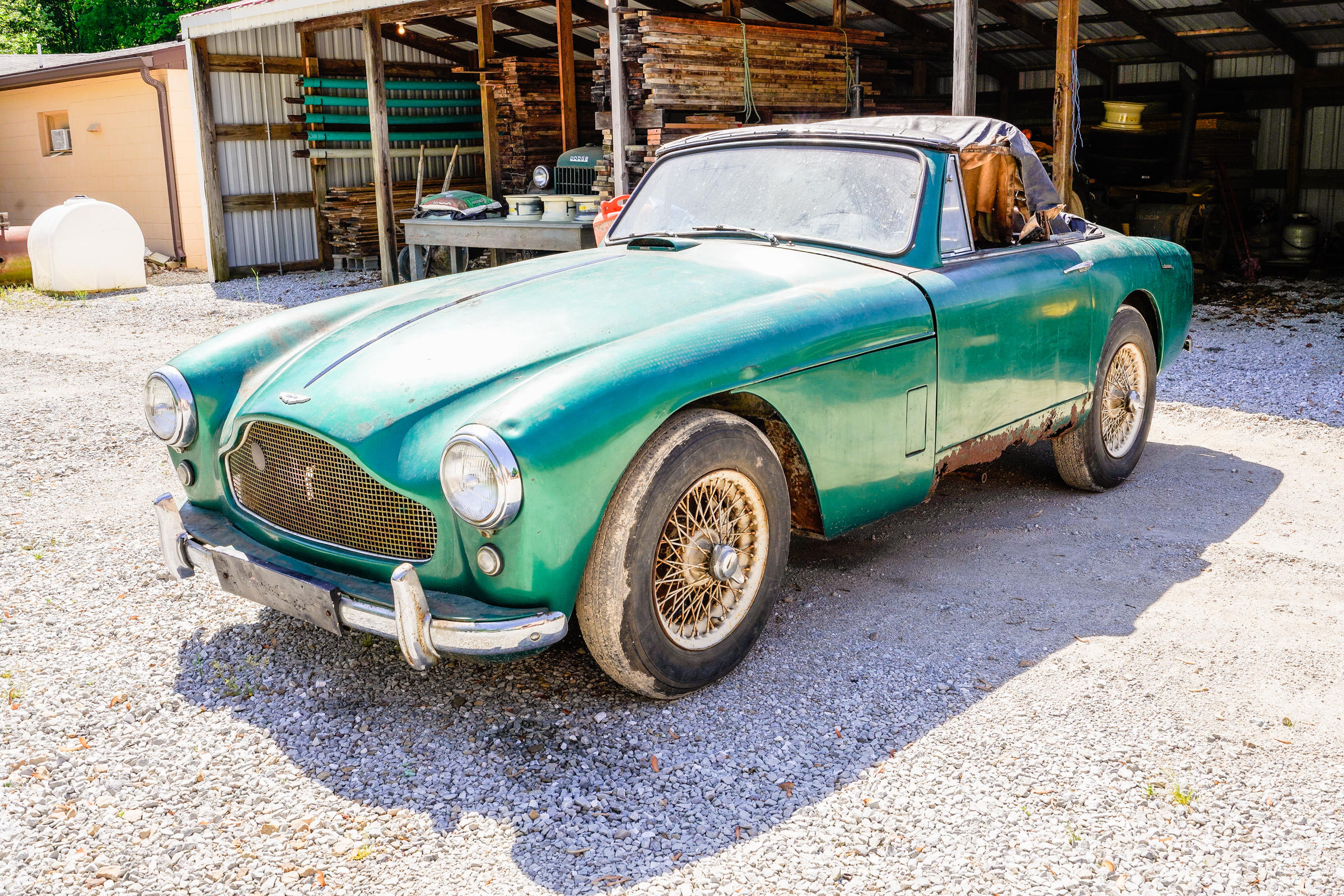
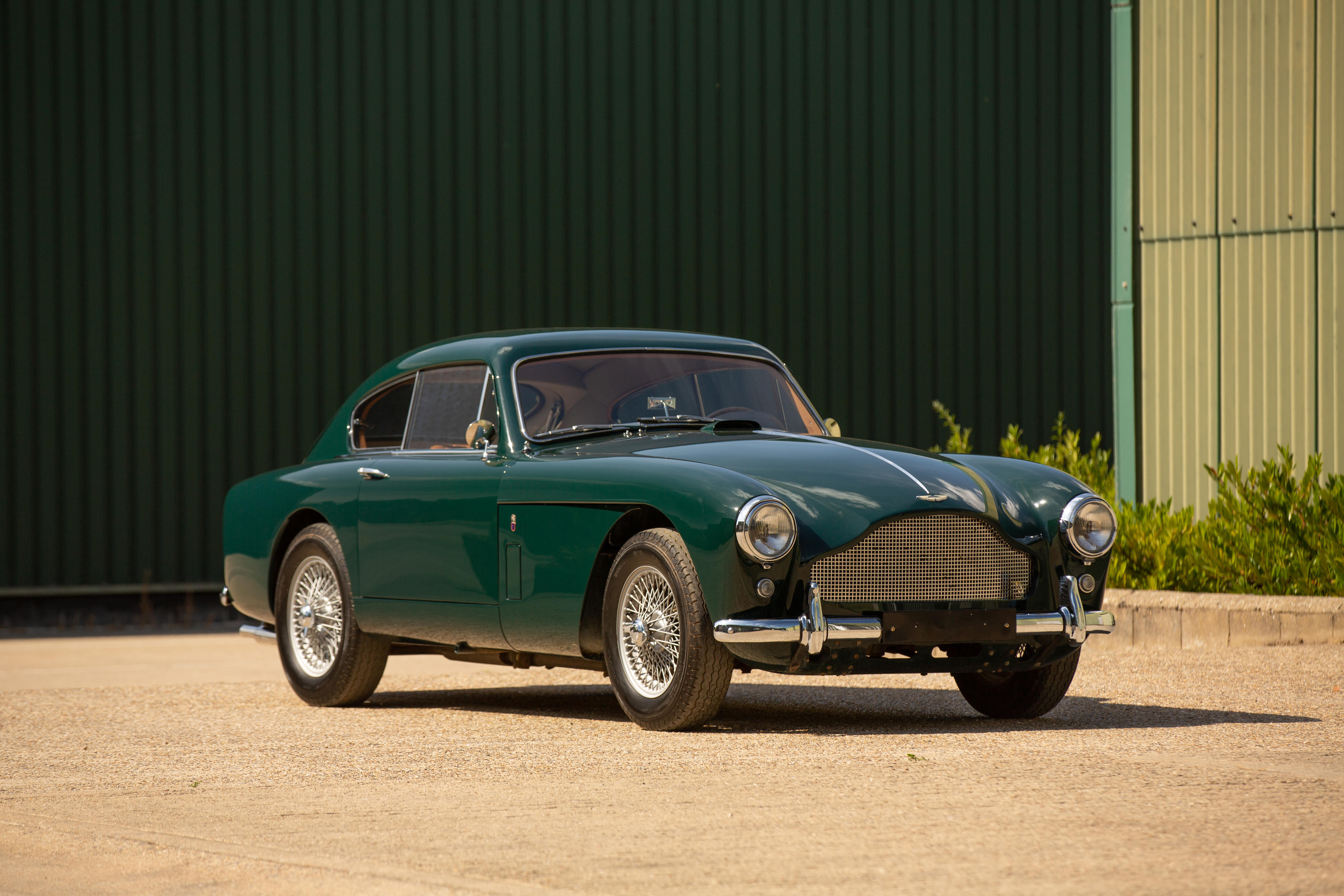

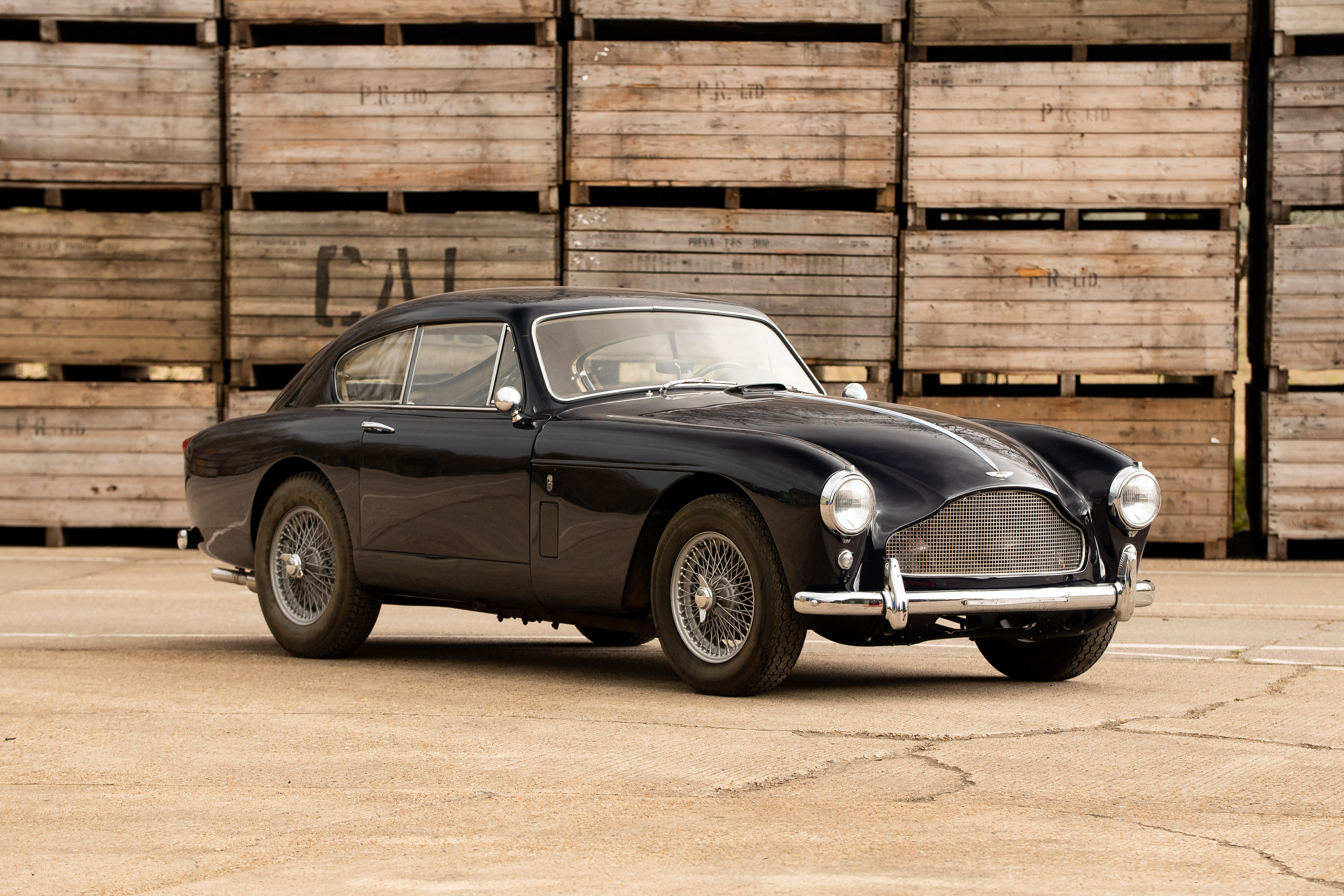
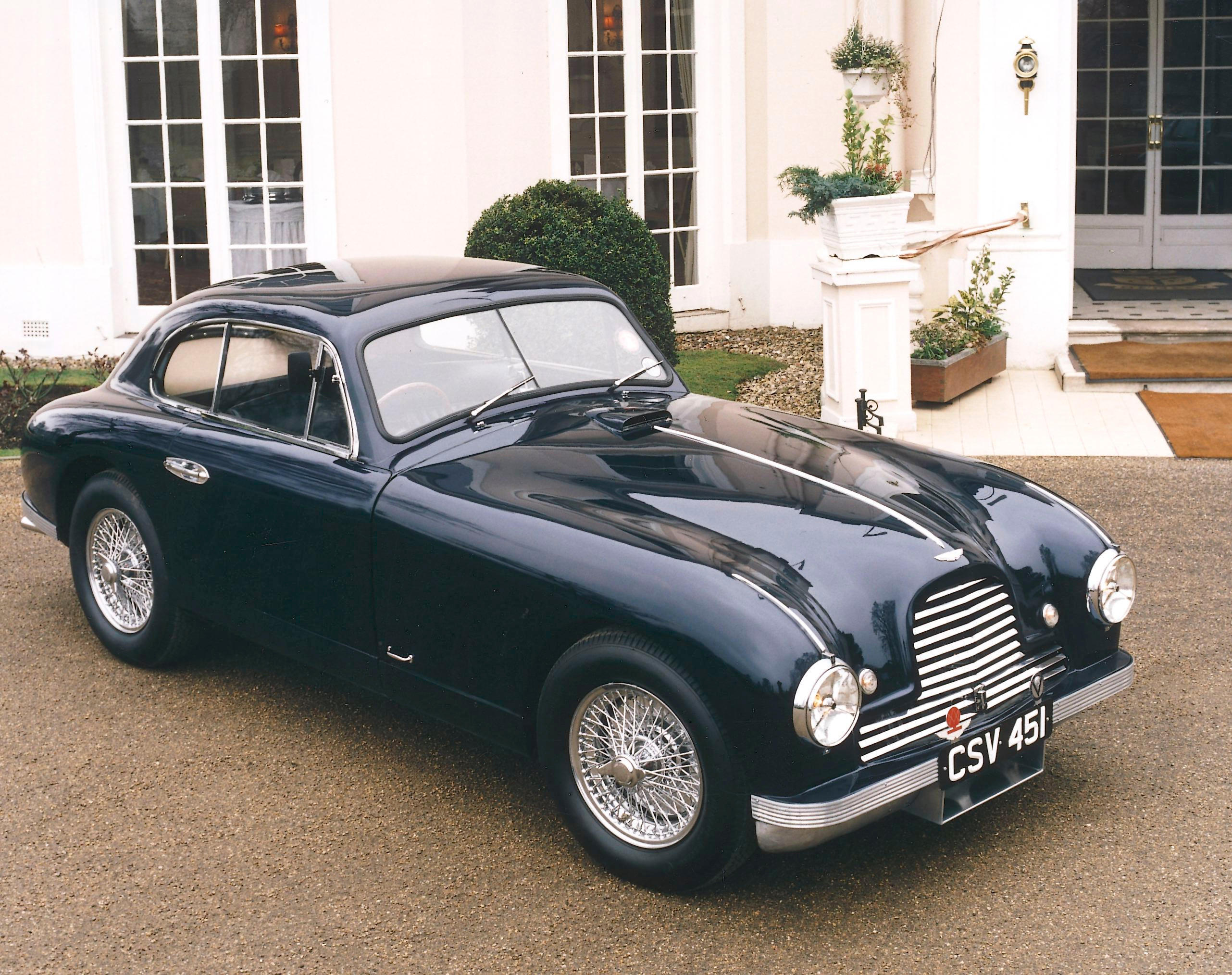


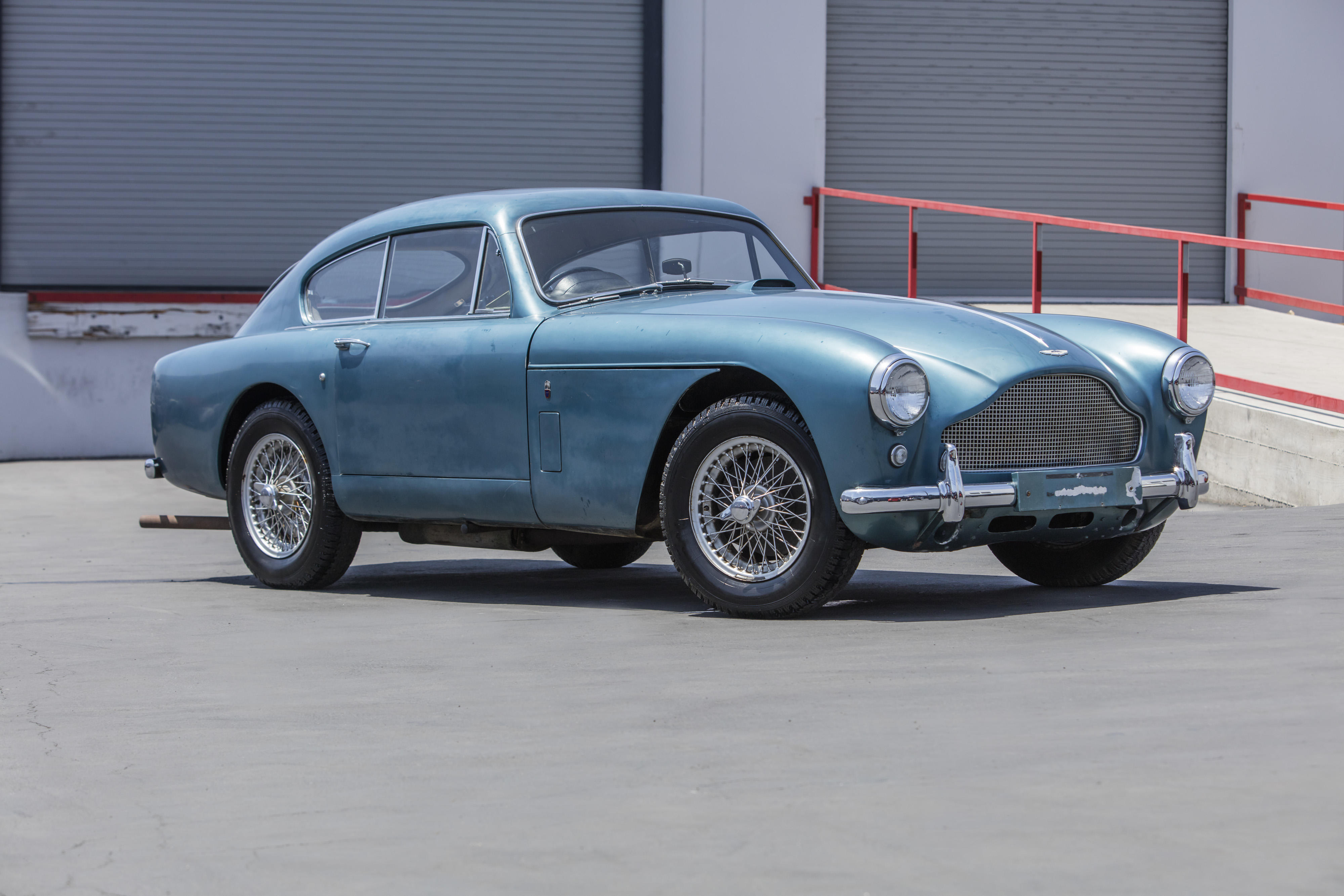

Testen Sie LotSearch und seine Premium-Features 7 Tage - ohne Kosten!
Lassen Sie sich automatisch über neue Objekte in kommenden Auktionen benachrichtigen.
Suchauftrag anlegen